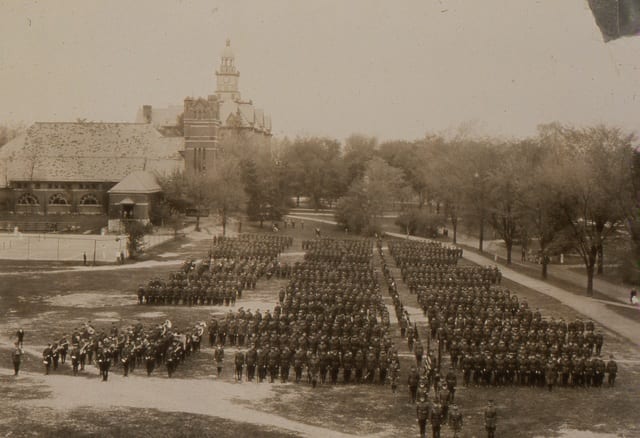As of late March, America was combating the spread of the novel coronavirus, or COVID-19, by adopting social-distancing measures. In response, Penn State, along with many other colleges and universities, moved to remote instruction, telling students not to return to campus from spring break through the rest of the semester. Commencement ceremonies were cancelled.
The dramatic rise of this disease over the last month or so and Penn State’s reaction to it prompted some to ask if such a suspension of on-campus classes has ever happened before. Of course, weather-related cancellations have become more common than in the past. But even national tragedies like 9/11 or the 1968 assassinations of the Rev. Martin Luther King and Robert F. Kennedy, which took place only two months apart, resulted in only temporary pauses or no change at all in academic schedules.
None of the other numerous viral outbreaks in the last 20 or so years interrupted classes. Not even the polio epidemic, which peaked around 1952, caused any interruption at Penn State (perhaps because the primary age cohort of victims were children ages 5-9).
The only 20th-century equivalent to the rapid rise of the coronavirus was the Spanish flu outbreak that occurred in the closing stages of World War I. Influenza peaked in the United States in mid-October 1918, only a few weeks before the armistice ending the war. More than 50 million people died worldwide, and 675,000 Americans died from the disease.
How did it affect Penn State? I decided to look at the Collegian to see the student perspective on the flu. Much to my surprise, the Penn State Collegian was not published between April 1918 and January 1919. Was the epidemic so bad that they had stopped publishing? Perhaps they also cancelled classes?
I quickly realized, however, that something else had altered college life for those Penn Staters – World War I. Being a Land Grant College, Penn State had required military training since its Civil War origins; however, the drill and instruction of those years did not lead to a commission in the Army for students. World War I changed all that.
In April 1917, the United States entered the war, and, by that fall, Penn State had an ROTC unit, leading to reserve commissions. Many other students were involved in various ways to support the war effort. Despite these activities, World War I had not significantly disrupted the academic programs.
However, in the spring of 1918, the Army began to place more troops on college campuses for logistical training. That summer, a new program – the Student Army Training Corps – began, which in effect enlisted all able-bodied students into the Army; military officers essentially took over the college for the fall semester. Thus, Collegian publication was suspended along with most other extracurricular activities.
Something else was also afoot in the spring of 1918; the Spanish Flu was beginning to spread in the United States. Its point of origin is still debated, but it seems to have come to America with soldiers returning from Europe and it spread quickly through military camps, and then to the general public.
Centre County would eventually have more than 300 cases, with most centered in State College, brought here by students from elsewhere in the state. Looking at issues of Bellefonte’s Democratic Watchman for October 1918, when the disease peaked, we can see small numbers of cases in various communities in the county, with comparatively few deaths.
There was no vaccine for this influenza strain, but many survived with effective nursing care and medical treatment for those whose flu transitioned to pneumonia. Isolation became the key, and not just for the sick. People quickly realized, as they had for some earlier epidemics, that avoiding crowds and quarantining the sick showed the best results.
One unexpected effect of the flu epidemic, however, came from the conversion of one of the temporary military barracks into an isolation ward, nicknamed the “pest house” and located in the woods about where the Kern Building is on Penn State’s campus today. This cemented the idea that Penn State needed more than an infirmary with a couple of rooms, and through the Emergency Building Fund campaign of the early 1920s, a Penn State hospital (later Ritenour Health Center) was built.
So, Penn State did not suspend classes for the 1918 Spanish flu pandemic, because academic classes had already been largely replaced by military training for World War I. The influenza outbreak rapidly burned itself out by the end of 1918. With the armistice and rapid demobilization, Penn State was back to normal in the spring semester of 1919.
We don’t yet know the course the coronavirus pandemic will take, but hopefully the solutions now being adopted will help to mitigate the impact until an effective vaccine is created and a return to normal life is possible.
Lee Stout is librarian emeritus, special collections, for Penn State.



